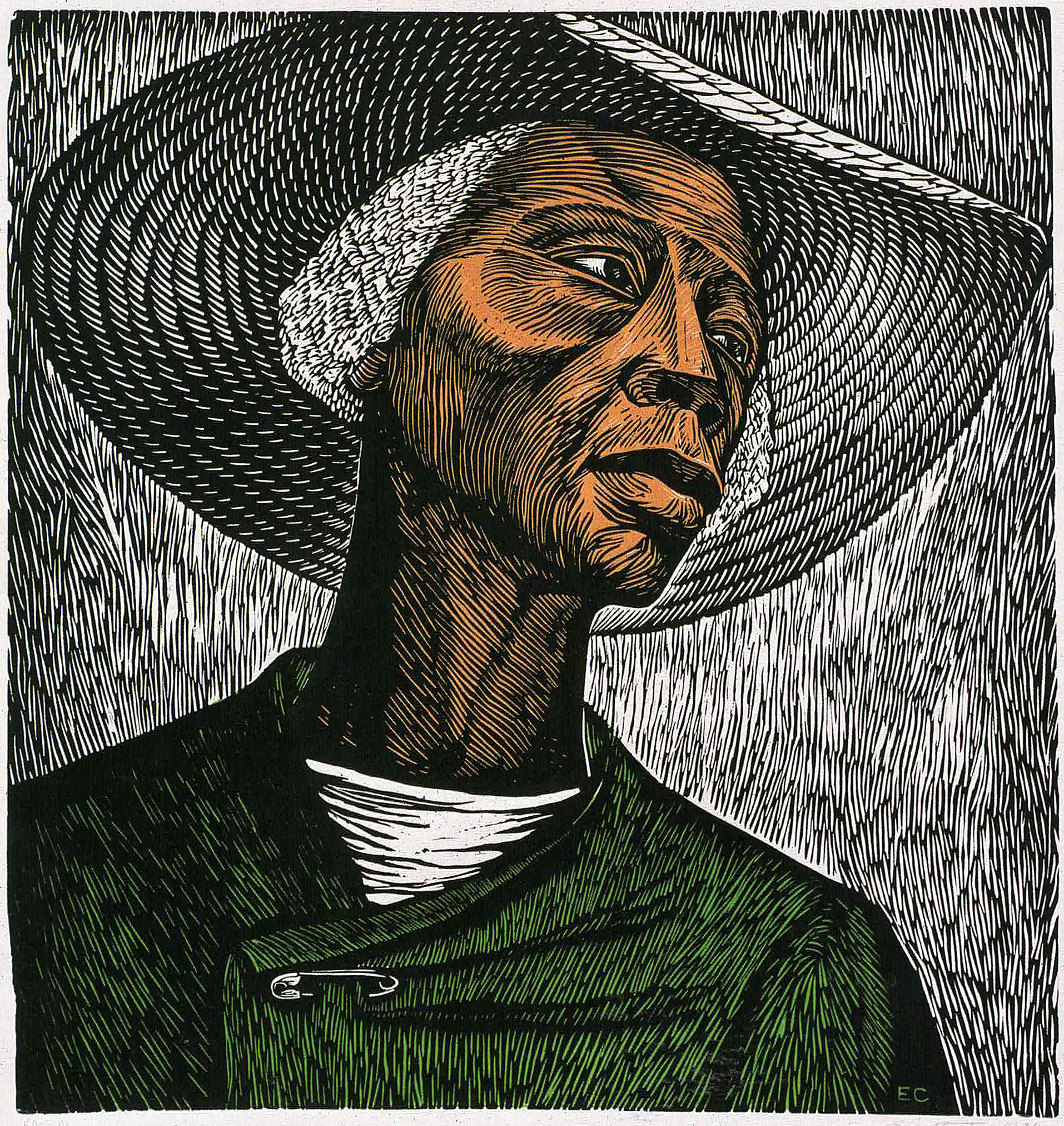 As a child, Charles White, preferred to retreat into a world of reading and drawing. Gradually he became more outspoken, influenced by Alain Locke’s The New Negro. As a student at Englewood High School, alongside other future notables such as Margaret Burroughs, Eldzier Cortor, and Charles Sebree, he often clashed with his teachers over their whitewashing of historical subjects. He joined George Neal’s Art Crafts Guild and gathered at the studio of Morris Topchevsky, where he was able to further explore his views of art, politics, and the role of the African American in society.
As a child, Charles White, preferred to retreat into a world of reading and drawing. Gradually he became more outspoken, influenced by Alain Locke’s The New Negro. As a student at Englewood High School, alongside other future notables such as Margaret Burroughs, Eldzier Cortor, and Charles Sebree, he often clashed with his teachers over their whitewashing of historical subjects. He joined George Neal’s Art Crafts Guild and gathered at the studio of Morris Topchevsky, where he was able to further explore his views of art, politics, and the role of the African American in society.
White graduated high school in 1937 and went on to study at the School of the Art Institute of Chicago. He was subsequently hired by the Illinois Art Project in the easel division, but transferred to the mural division, where he worked with Edward Millman and Mitchell Siporin. His first major mural, Five Great American Negroes, was completed in 1940. His work was also exhibited at the American Negro Exposition, winning several awards.
White married Elizabeth Catlett in 1941 after meeting her at the South Side Community Art Center, and the pair moved to New Orleans where they both taught at Dillard University. Two consecutive Rosenwald scholarships allowed him to study lithography at the Art Student’s League of New York with Harry Sternberg, as well as travel the Southern United States. He used this opportunity to observe and paint black farmers and laborers for his mural, The Contribution of the Negro to the Democracy of America.
Catlett and White relocated to Mexico where they both became involved with the Taller Grafica de Popular. After their divorce, White returned to New York City. His work retained a figurative style which stood in stark contrast to the burgeoning abstract movement occurring at the time. He used drawings, linocuts, and woodcuts to celebrate the historical figures who resisted slavery, as well as ordinary African Americans struggling amid great social injustice in a post-slavery America. Despite their small size, these works conveyed the power of a mural.
In New York in the 1940s and early 1950s, White showed his work at the progressive ACA Gallery and was a prominent member of African American and leftist artist communities. White moved to Southern California in 1956, and his career flourished as he embraced drawing and printmaking more fully, pushing at the boundaries of his media while continuing to engage with civil rights and equality. Despite his rejection of the prevailing style of Abstract Expressionism and ongoing use of an expressive figuration, he found critical acclaim in the United States and abroad.
White was the second African American to be inducted into the National Academy of Art and Design in 1975. Charles White: A Retrospective was held at the Art Institute of Chicago (2018). This exhibition traveled to the Museum of Modern Art and the Los Angeles County Museum of Art (2019).




